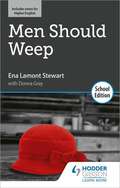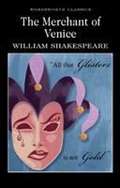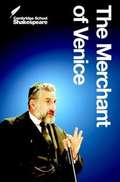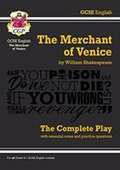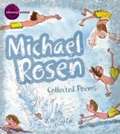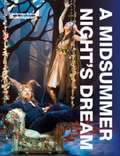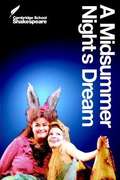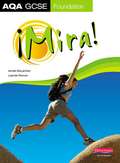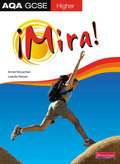- Table View
- List View
Meiosis phase two (UEB Contracted)
by Rnib BookshareThese pages show the four stages of the second phase of meiosis and non-identical gametes as a product of meiosis. There is a locator dot shown on each page, which will be at the top left of the page when the image is the correct way up. Meiosis is cell replication where a cell divides to produce four non-identical gametes, each with only one set of chromosomes instead of the usual two sets found in all other cells.Meiosis - stage five, prophase II. This page shows the start of the second phase of meiosis. The original cell has divided into two non-identical cells. There is a cell to the left and right of the page. The cell to the left has a pair of centrioles in the bottom and a single chromatid in the top of the cell. The cell to the right has a pair of centrioles in the top and a single chromatid in the bottom of the cell. In reality in humans there would be twenty three chromatids in each cell.Meiosis - stage six, metaphase II. This page shows a cell to the left and right. Each has a completed mitotic spindle with a centriole to the top and bottom. The chromatids have attached themselves to the centre of each spindle on the central microtubule by their centromeres in the centre of each cell. For clarity other chromatids are not shown so the microtubule to the left and right of each cell appears empty. In reality there would be many more chromatids and microtubules.Meiosis - stage seven, anaphase II. This page shows the centromeres have separated in each cell to the left and right of the page. The microtubules of the spindle are retracting to the top and bottom. The chromatids have split, and each chromosome of each chromatid are migrating to opposite ends of the spindle to the top and bottom in each cell.Meiosis - stage eight, telophase II. This page shows two cells with centrioles to the top and bottom. There is a single chromosome to the top and bottom centre of each cell. The plasma membrane is pinching in from the left and right and starting to divide the cytoplasm in each cell. Four non-identical gametes produced The cells have divided to form four genetically non-identical cells. Each has only one of the original pair of chromosomes. In reality each gamete would have one set of twenty three chromosomes, only one is shown for clarity.
Meiosis phase two (UEB Uncontracted)
by Rnib BookshareThese pages show the four stages of the second phase of meiosis and non-identical gametes as a product of meiosis. There is a locator dot shown on each page, which will be at the top left of the page when the image is the correct way up. Meiosis is cell replication where a cell divides to produce four non-identical gametes, each with only one set of chromosomes instead of the usual two sets found in all other cells.Meiosis - stage five, prophase II. This page shows the start of the second phase of meiosis. The original cell has divided into two non-identical cells. There is a cell to the left and right of the page. The cell to the left has a pair of centrioles in the bottom and a single chromatid in the top of the cell. The cell to the right has a pair of centrioles in the top and a single chromatid in the bottom of the cell. In reality in humans there would be twenty three chromatids in each cell.Meiosis - stage six, metaphase II. This page shows a cell to the left and right. Each has a completed mitotic spindle with a centriole to the top and bottom. The chromatids have attached themselves to the centre of each spindle on the central microtubule by their centromeres in the centre of each cell. For clarity other chromatids are not shown so the microtubule to the left and right of each cell appears empty. In reality there would be many more chromatids and microtubules.Meiosis - stage seven, anaphase II. This page shows the centromeres have separated in each cell to the left and right of the page. The microtubules of the spindle are retracting to the top and bottom. The chromatids have split, and each chromosome of each chromatid are migrating to opposite ends of the spindle to the top and bottom in each cell.Meiosis - stage eight, telophase II. This page shows two cells with centrioles to the top and bottom. There is a single chromosome to the top and bottom centre of each cell. The plasma membrane is pinching in from the left and right and starting to divide the cytoplasm in each cell. Four non-identical gametes produced The cells have divided to form four genetically non-identical cells. Each has only one of the original pair of chromosomes. In reality each gamete would have one set of twenty three chromosomes, only one is shown for clarity.
Men Should Weep: School Edition
by Ena StewartA Schools Edition of Men Should Weep by Scottish playwright Ena Lamont Stewart, a popular set text for SQA Higher English. Set in the 1930s, Men Should Weep centres on the challenges faced by the Morrison family. This riveting portrayal of life in Glasgow's slums explores themes such as poverty, love and the role of women.
The Merchant of Venice
by Cedric Watts William ShakespeareThe Wordsworth Classics' Shakespeare Series presents a newly-edited sequence of William Shakespeare's works. The textual editing takes account of recent scholarship while giving the material a careful reappraisal. The Merchant of Venice is one of Shakespeare's most popular comedies, but it remains deeply controversial. The text may seem anti-Semitic; yet repeatedly, in performance, it has revealed a contrasting nature. Shylock, though vanquished in the law-court, often triumphs in the theatre. In his intensity he can dominate the play, challenging abrasively its romantic and lyrical affirmations. What results is a bitter-sweet drama. Though The Merchant of Venice offers some of the traditional pleasures of romantic comedy, it also exposes the operations of prejudice. Thus Shakespeare remains our contemporary. Suitable for all secondary level study up to GCSE/Standard Grade, this edition contains two sets of differentiated activities at the end of each act. The activities are designed to develop student understanding of the play and its themes.
The Merchant of Venice (PDF)
by William Shakespeare Jonathan Morris Robert SmithThis edition of The Merchant of Venice is part of the Cambridge School Shakespeare series . Remaining faithful to the series' active approach it treats the play as a script to be acted, explored and enjoyed.
The Merchant of Venice (PDF)
by Cedric Watts William ShakespeareThe Wordsworth Classics' Shakespeare Series presents a newly-edited sequence of William Shakespeare's works. The textual editing takes account of recent scholarship while giving the material a careful reappraisal. The Merchant of Venice is one of Shakespeare's most popular comedies, but it remains deeply controversial. The text may seem anti-Semitic; yet repeatedly, in performance, it has revealed a contrasting nature. Shylock, though vanquished in the law-court, often triumphs in the theatre. In his intensity he can dominate the play, challenging abrasively its romantic and lyrical affirmations. What results is a bitter-sweet drama. Though The Merchant of Venice offers some of the traditional pleasures of romantic comedy, it also exposes the operations of prejudice. Thus Shakespeare remains our contemporary. Suitable for all secondary level study up to GCSE/Standard Grade, this edition contains two sets of differentiated activities at the end of each act. The activities are designed to develop student understanding of the play and its themes.
The Merchant of Venice - The Complete Play with Annotations, Audio and Knowledge Organisers
by William ShakespeareThis The Merchant of Venice Complete Play contains the full text of all five acts, with helpful annotations explaining all the tricky bits in plain English. It includes scene overviews and a context section, so that students can keep track of the plot, characters and historical details. Plus, there is lots of practice, with questions and activities at the end of every scene. We've also added Knowledge Organiser pages, which lay all the essentials out in one handy place, and online audio extracts, which let students hear key scenes performed, just as Shakespeare intended. The CGP range for Shakespeare also includes a matching Text Guide (9781782948490), which contains all the notes and practice you need to really master The Merchant of Venice!
Methods of Collecting Fieldwork Data
by Chloe SearlMethods of Collecting Fieldwork Data is the first book in a series aimed at GCSE, A Level and IB Geographers undertaking fieldwork enquiries and investigations. This book aims to help both students and teachers select the most suitable methods for collecting qualitative and quantitative data. The advantages and disadvantages of each method are discussed, and there is extensive advice on how to get the most from collecting data using GIS. The wider principles of data collection are also explored, giving the reader the context in which the methods are applied and helping them to see the high level of planning needed before they take their clipboard into the field.
Methods of Presenting Fieldwork Data
by Chloe SearlMethods of Presenting Fieldwork Data is the second book in a series aimed at GCSE, A Level and IB geographers undertaking fieldwork enquiries and investigations. This book aims to help both students and teachers select the most suitable methods for presenting qualitative and quantitative data. The advantages and disadvantages of each method are discussed, and there is extensive advice on how to get the most from presenting data using GIS. The wider principles of data presentation are also explored, giving the reader the context in which the methods are applied and helping them to understand the differences between the methods and their relative appropriateness for a range of studies.
Michael Rosen: Collected Poems. Charles Causley (PDF)
by Michael RosenMichael Rosen's volume of collected poems with poems by Charles Causley
A Midsummer Night's Dream (Cambridge School Shakespeare Ser.)
by William Shakespeare Rex Gibson Richard Andrews Vicki Wienand Linda BuckleAn active approach to classroom Shakespeare enables students to inhabit Shakespeare's imaginative world in accessible and creative ways. Students are encouraged to share Shakespeare's love of language, interest in character and sense of theatre. Substantially revised and extended in full colour, classroom activities are thematically organised in distinctive 'Stagecraft', 'Write about it', 'Language in the play', 'Characters' and 'Themes' features. Extended glossaries are aligned with the play text for easy reference. Expanded endnotes include extensive essay-writing guidance for 'A Midsummer Night's Dream' and Shakespeare. Includes rich, exciting colour photos of performances of 'A Midsummer Night's Dream' from around the world. An improved, larger-format edition of the Cambridge School Shakespeare plays, extensively rewritten, expanded and produced in an attractive new design.nbsp;
A Midsummer Night's Dream (PDF)
by William Shakespeare Linda BuckleThis edition of A Midsummer Night's Dream is part of the groundbreaking Cambridge School Shakespeare series established by Rex Gibson. Remaining faithful to the series' active approach it treats the play as a script to be acted, explored and enjoyed. As well as the complete script of the play, you will find a variety of classroom-tested activities, an eight-page colour section and a selection of notes including information on characters, performance, history and language.
Mira! AQA GCSE: Foundation, student book
by Anneli Mclachlan Leanda ReevesThe Mira!: AQA GCSE: Foundation: Student Book has been written to prepare students for the AQA GCSE specification. With a strong focus on controlled assessment and exam preparation throughout the course, students can confidently aim for up to grades C at GCSE. Graded examples and examiner tips in Grade Studio show students how to aim for the best possible results through perfecting key language skills.
Mira! AQA GCSE: Foundation, student book
by Anneli Mclachlan Leanda ReevesThe Mira!: AQA GCSE: Foundation: Student Book has been written to prepare students for the AQA GCSE specification. With a strong focus on controlled assessment and exam preparation throughout the course, students can confidently aim for up to grades C at GCSE. Graded examples and examiner tips in Grade Studio show students how to aim for the best possible results through perfecting key language skills.
Mira! AQA GCSE: Higher, student book
by Anneli Mclachlan Leanda ReevesControlled assessment and exam practice, specifically tailored for AQA, are integrated throughout. Fully differentiated resources engage students at just the right pace and level. Graded examples and examiner tips in Grade Studio show students how to aim for the best possible grade through perfecting key language skills.
Mira! AQA GCSE: Foundation, student book (PDF)
by Anneli Mclachlan Leanda ReevesThe Mira!: AQA GCSE: Foundation: Student Book has been written to prepare students for the AQA GCSE specification. With a strong focus on controlled assessment and exam preparation throughout the course, students can confidently aim for up to grades C at GCSE. Graded examples and examiner tips in Grade Studio show students how to aim for the best possible results through perfecting key language skills.
Mira! AQA GCSE: Foundation, student book
by Anneli Mclachlan Leanda ReevesThe Mira!: AQA GCSE: Foundation: Student Book has been written to prepare students for the AQA GCSE specification. With a strong focus on controlled assessment and exam preparation throughout the course, students can confidently aim for up to grades C at GCSE. Graded examples and examiner tips in Grade Studio show students how to aim for the best possible results through perfecting key language skills.
Mira! AQA GCSE: Higher, student book (PDF)
by Anneli Mclachlan Leanda ReevesControlled assessment and exam practice, specifically tailored for AQA, are integrated throughout. Fully differentiated resources engage students at just the right pace and level. Graded examples and examiner tips in Grade Studio show students how to aim for the best possible grade through perfecting key language skills.
Miscellaneous laboratory equipment 1 (Large Print)
by RnibThis page shows eight items of laboratory equipment. All are seen from the side in cross section, except the micro-chambered test slide in the top left corner of the page, which is viewed from the top. There is a locator dot and title shown, which will be at the top left of the page when it is the correct way up. The items are arranged in three columns with each item labelled down the page.
Miscellaneous Laboratory Equipment 1 (UEB Contracted)
by RnibThis page shows eight items of laboratory equipment. All are seen from the side in cross section, except the micro-chambered test slide in the top left corner of the page, which is viewed from the top. There is a locator dot and title shown, which will be at the top left of the page when it is the correct way up. The items are arranged in three columns with each item labelled down the page.
Miscellaneous laboratory equipment 1 (UEB Uncontracted)
by Rnib BookshareThis page shows eight items of laboratory equipment. All are seen from the side in cross section, except the micro-chambered test slide in the top left corner of the page, which is viewed from the top. There is a locator dot and title shown, which will be at the top left of the page when it is the correct way up. The items are arranged in three columns with each item labelled down the page.
Miscellaneous laboratory equipment 2 (Large Print)
by Rnib BookshareThis page shows items of laboratory equipment seen from the side in cross section. There is a locator dot and title shown, which will be at the top left of the page when it is the correct way up. There are three items at the top of the page and three at the bottom. In the lower part of the desiccator, in the top left of the page, there are crystals of silica gel desiccant. The bell jar, in the top right of the page, stands on a sheet of plate glass and has a beaker standing inside it.
Miscellaneous laboratory equipment 2 (UEB Contracted)
by Rnib BookshareThis page shows items of laboratory equipment seen from the side in cross section. There is a locator dot and title shown, which will be at the top left of the page when it is the correct way up. There are three items at the top of the page and three at the bottom. In the lower part of the desiccator, in the top left of the page, there are crystals of silica gel desiccant. The bell jar, in the top right of the page, stands on a sheet of plate glass and has a beaker standing inside it.
Miscellaneous laboratory equipment 2 (UEB Uncontracted)
by Rnib BookshareThis page shows items of laboratory equipment seen from the side in cross section. There is a locator dot and title shown, which will be at the top left of the page when it is the correct way up. There are three items at the top of the page and three at the bottom. In the lower part of the desiccator, in the top left of the page, there are crystals of silica gel desiccant. The bell jar, in the top right of the page, stands on a sheet of plate glass and has a beaker standing inside it.
Mitosis (Large Print)
by Rnib BookshareThis image shows the four stages of mitosis over two pages. Page One has two images: 1. A cell has 4 chromosomes, two pairs. 2. Chromosomes are copied. Page Two has two images: 3. Chromosomes form one line down the centre of the cell. 4. One copy of each chromosome moves to the opposite pole of the cell.

